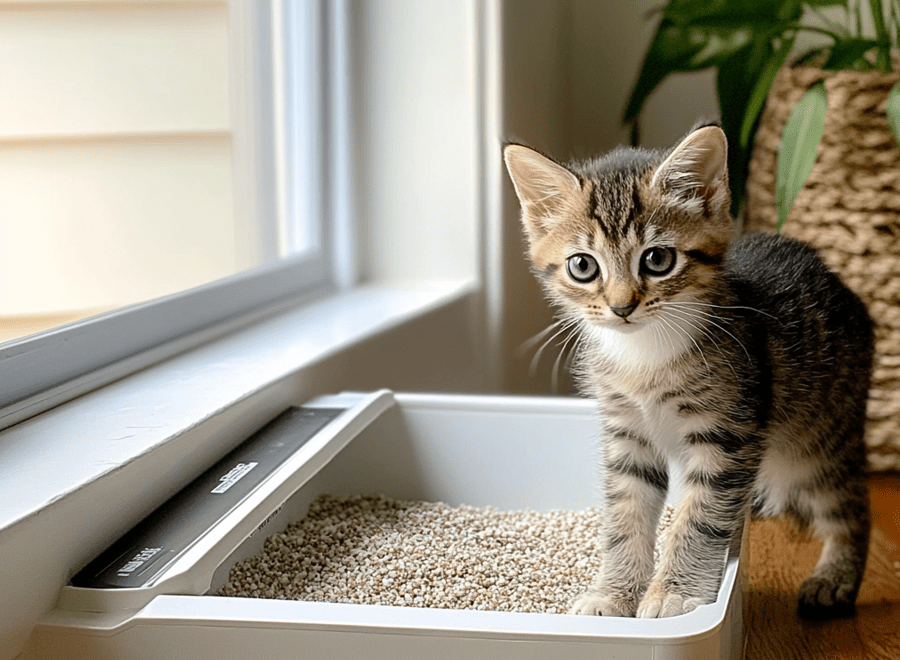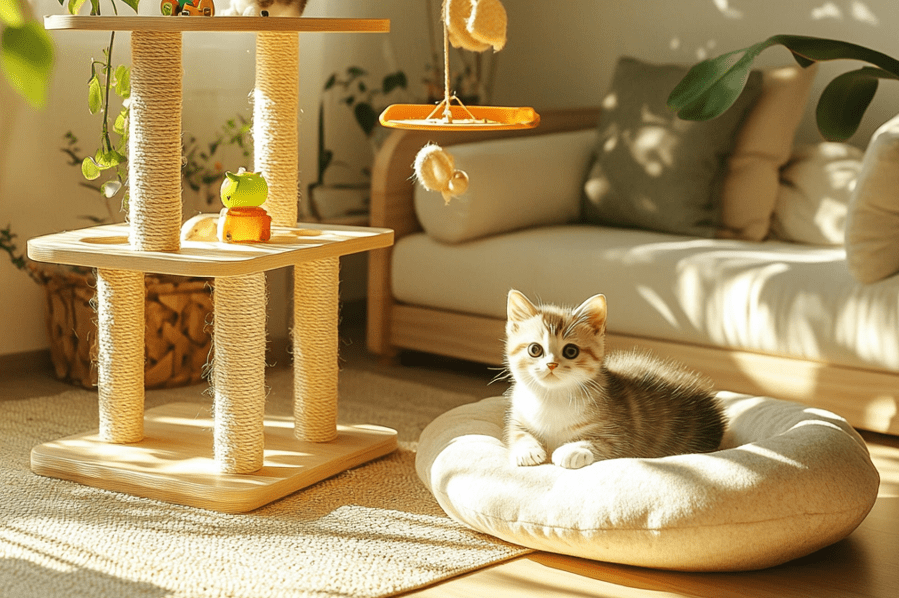
Cats can be the perfect companion for children. Cats can teach children some of the greatest facts in life, like responsibility, empathy and privacy. Meanwhile, proper introductions must be considered as an indispensable aspect to straightforward seating for a happy-ending experience on both ends. In this article prepare your kids and cats how to bring a kitten home and what to do in the initial meeting. We offer advice that will help them become more bonded in a safe and loving environment.
To watch the summary of this article, just watch this video-
Preparing Your Children for a New Cat
The first encounter between your child and the new kitten can be an exciting time for everyone. Prior to the arrival of the new kitten, it is important to have a conversation with your child about how to introduce this addition to the family properly. The topic will be related to the discussed points below:
1.Explaining what the kitten will experience in his first few days and how he will feel.
2.Setting up everything you need before the kitten moves in
3.Calling the kitten in some names
4.Setting rules to protect the welfare and happiness of the kitten
Five Fun Ways to Prepare for Your Kitten
Get your children involved in preparing for your new kitten before it comes home. Folks get involved not only to prepare them for what is coming but also to participate in the decision-making part when it comes to caring for the cat, from an early stage.
1.Share a Shopping List
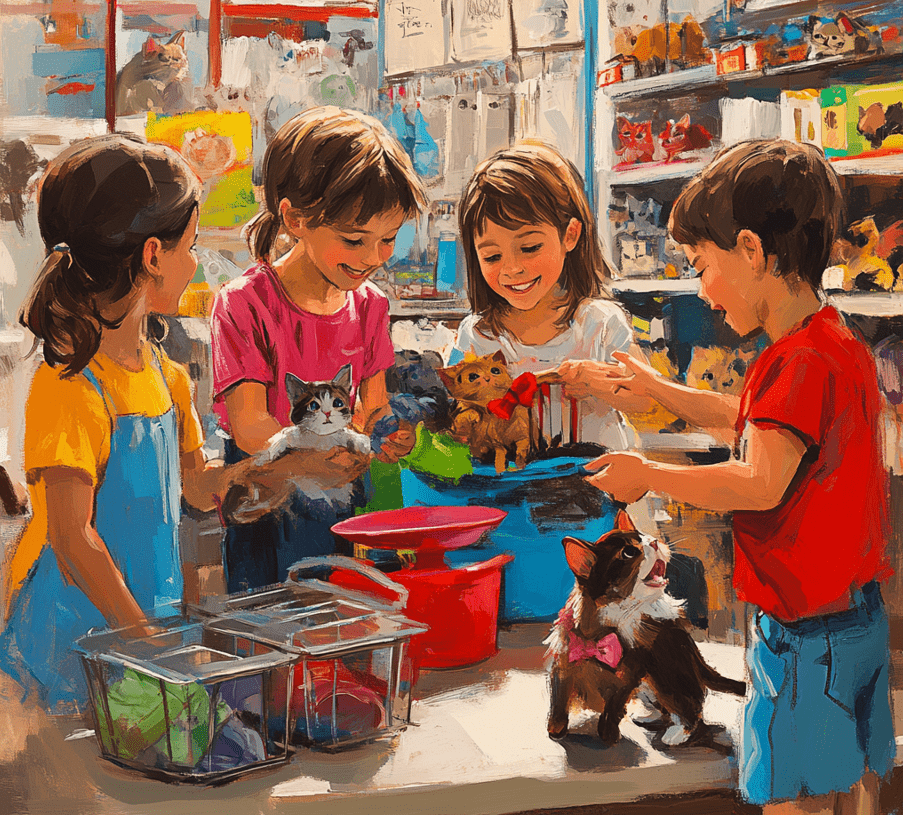
Get together and discuss the list of essential things for your kitten. We have a list of what you should keep on hand as an essential shopping guide. In the end, your children will be able to choose with the colors and their most importantly kids love to get toys for the new pet.
For example you could allow your child to save up to buy a special toy or even something for the kitten from pocket money. They may find it a meaningful way to welcome their new companion.
2.Establish Cat Promises
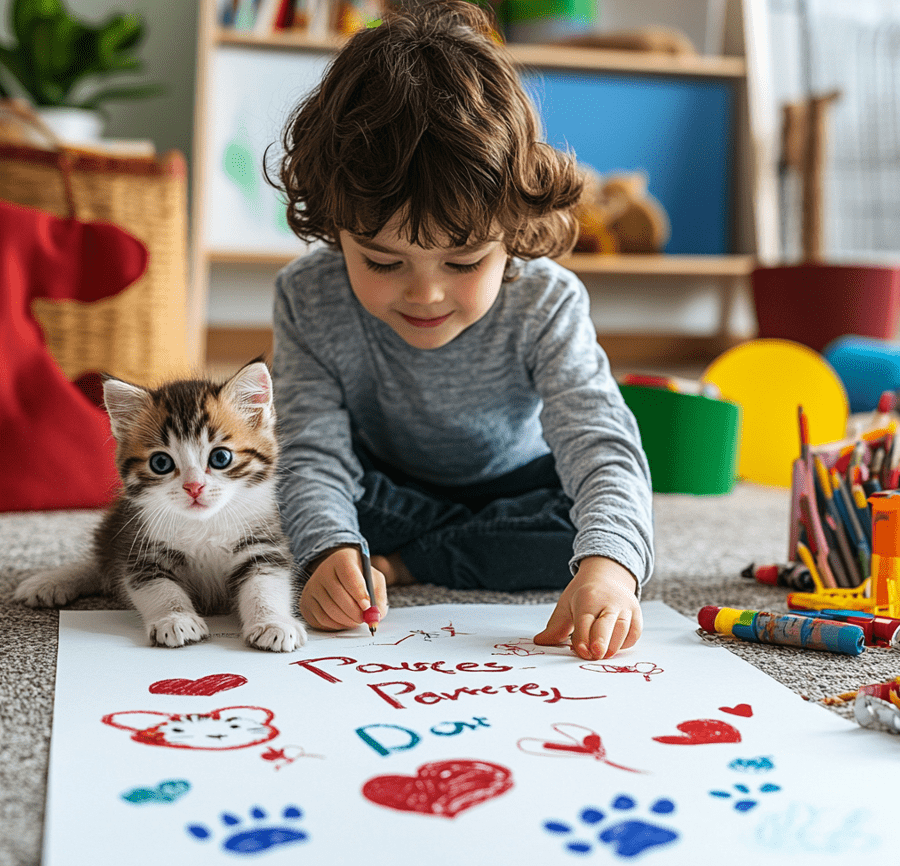
Create a list of cat conditions or dedications. It can be a fun activity for all to enjoy, and is also useful as reference when your pet gets home.
Honor Your Childs Ideas — ideally have them write a list of what the new feline companion may want. For instance:
1.Be gentle when petting them.
2.Do not bug them when they are sleeping.
3.Keep them hydrated with a steady source of freshwater.
You could also change these promises into a beautiful poster with colors and patterns together.
3.Engage in Pretend Play

In this stage, your child will not understand written rules for caring for the pet. As a result, teaching them the essence of caring for something in an enjoyable manner through a toy pet is what makes it even more fun.
But there is a whole world of fun toy choices that come with bowls or beds. These toys are a powerful tool in cultivating compassion for animals from childhood.
If you are going to get a kitten, consider buying him/her one of these cat toys. Ask your child what the ‘pet’ would like and invite them to pretend to play scenarios such as brushing them, feeding the toy.
4.Create a Welcome Home Card
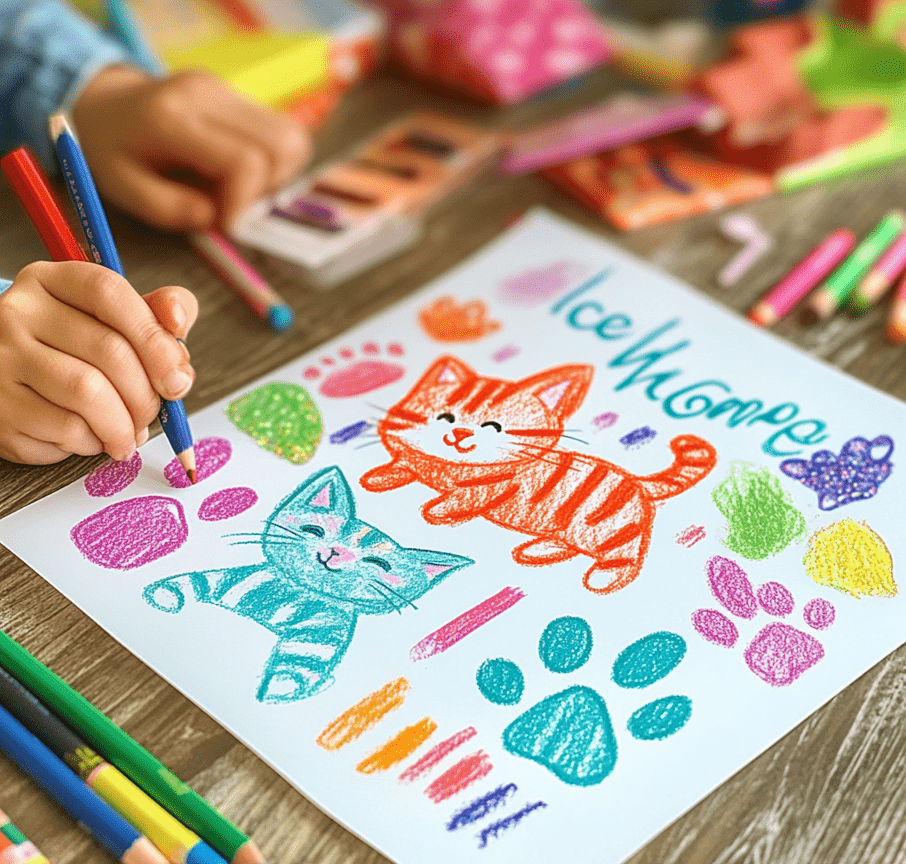
Set your children to work on a welcome home card for the feline. It readies them for the cat to come and helps to cultivate a positive environment for welcoming their new furry family member.
5.Initiate a Scrapbook

It might sound a bit old-fashioned, but think about keeping a scrapbook in which you mark humorous events or important family moments. You can include:
1.Photographs
2.Drawings
4.Paintings
It is a memento that will serve as a precious keepsake to look back on in the years to come.
First Day Home with Your Kitten
Your kitten will be very tired when it arrives at your home. Acclimating to life without its mother and siblings can be stressful in combination with travel.

Below are some tips to help your kitten adjust, even with your kids running rampant:
1.Provide a Quiet Space
Like children need rest, kittens require a quiet place to sleep following the excitement of all their exploration. While your kitten is in this quiet area, unplugging from the world for just a bit; it is very important that this designated time can be used to relax and rest.
2.Teach Your Kitten to Come Close
When your kittens had enough sleep and are becoming more curious:
1.Sit on the floor next to your child.
2.Keep both still and relaxed.
3.Let your kitten come up to you, petting her gently to coax her.
4.The goal of the first few days is to establish a bond between your kitten and your child by keeping interactions short and sweet.
3.Limit Play Sessions
Kittens need loads of sleep so ensure you also make time for these breaks. Just like kids, if kittens don’t get enough sleep they will be a little grumpy.
4.Utilize Kitten Toys for Play
Kittens by nature use their teeth and claws when playing. Get them to appropriate toys as quickly as possible. This will help stave off any future unwanted behaviors down the road. We also have great tips to help with play time and how to teach your kitten what toys they should or should not play with.
5.Maintain Supervision
It’s also essential for your cat to learn about gentle handling, but children can be far more likely than the cat wants a pick up! So, it is very important when detracting those cat fights, to monitor the kitten so that it feels safe and in its element.
How to Create a Good Relationship between Kids and Kitten

Teach Respect for Boundaries
The step number one and the most needed one in introducing cats to children is making sure that your child knows how to behave towards a cat safely. Cats, like us humans, need to have their space too and they might not be up for petting or playing all the time. Interaction preferences are individual to each cat. It is best to show them how to approach the cat and wait for it to initiate contact. Also, your cat must have a refuge evermore necessary to it. This is a perfect environment for both child and cat to coexist so that they feel happy and safe around each other, breaking down the walls of friendship!
Educating on Cat Behavior
Cat psychology plays a major role in the success of an introduction. Your child also needs to be educated about the typical behaviors of cats, like purring, tail flicking and ear movements. Explain that cats communicate their emotions and intentions by body language. This knowledge will help your kids interpret cat signs better, and the benefits of this are enhanced communication and a stronger bond with their beloved feline parent.
Monitoring Initial Interactions
Supervision is critical here, especially with young children. Give your child a sense of place where they can stay still and let the cat venture toward them on their own. But at the beginning, keep those interactions short, and if you see any stressed out or overwhelmed body language from the kitty, teach your child that it is time for the cat to be alone. Expand these interactions over time as both the child and cat become increasingly comfortable with one another.
Teaching Children Gentle Cat Handling
Small children are usually interested in what they see and want to touch moving things — such as a cat’s tail. But that said their curiosity can lead to them manhandling you. You need to train your child on how to behave around a cat. Show how to pet a cat the right way, remind people not to touch in areas of sensitivity (cat belly, tail). Suggest gentle pets and praise the child when they behave appropriately with the pet.
When the child starts to play rough, pulling the cat’s tail and wiping its ears or whiskers gently tell them not to, and show how they should pet properly. Even if the cat does not seem disturbed, intervention is necessary so that the child learns this lesson with a gentle reminder (if possible) this time versus by way of one of our more feisty feline friends next time around.
Engage Children in Cat Care
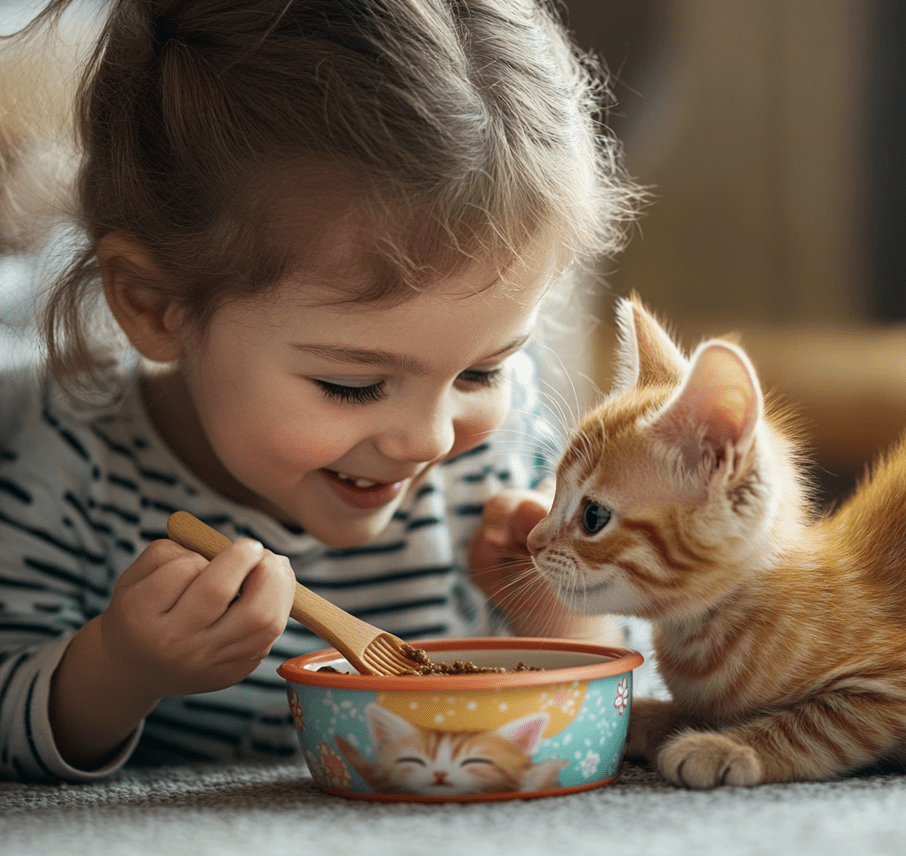
This promotes responsibility as well as a greater bond between children and their pet. Give your cat different activities like feeding, grooming or playing with an interactive toy appropriate to their age. This will help re-educate your cat to exhibit its natural behaviors and allows the kids to participate in a constructive rather than destructive fashion. On the other hand, little children should always be supervised on such activities to keep not only your child safe but also your cat.

